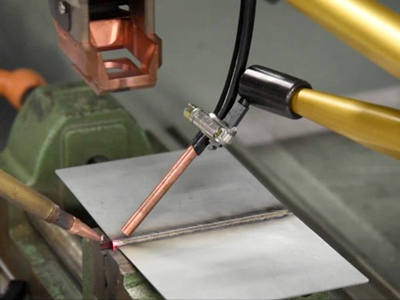- Types of processing: laser soldering
- Machined materials: metals
- Solder material: alloys of tin, bismuth, antimony and cadmium (soft soldering); copper, nickel, aluminum, silver, etc. (hard soldering)
- Adventages: no finishing, high stress transfer, joint can be operated at high temperatures

Although the predominant technique for joining materials is welding, not all components can be joined this way. As an alternative, laser soldering can be used, which means joining components using solder that is fed into the work area via a wire or pre-applied paste. As a result of the delivery of laser energy, the binder melts and penetrates into the gaps between the objects to be soldered, where a diffusion bond occurs between the material and the solder. The peculiarities of soldering are the lower melting temperature of the solder than that of the parts to be joined and the production of a ready-made joint, without the need for additional finishing.
Galeria zdjęć
Soft soldering
Soft soldering occurs at temperatures up to 450°C and is used to join two different materials, such as aluminum to steel, electronic circuit components to a PCB, and in the manufacture of photovoltaic panels. The resulting joint is characterized by low stresses, but is not suitable for high temperatures. As a material for solder, alloys consisting of tin, bismuth, antimony and cadmium are most often used.
Brazing
Brazing occurs at temperatures above 450°C lower than the melting point of the materials being joined. This also translates into laser power, which must be higher than for soft soldering. The resulting joint – thanks to its strength similar to that of a welded joint – is characterized by its ability to carry high stresses. Brazing is divided according to the main chemical component into copper, nickel, aluminum or silver solders, among others. The main area of application of the technique in question is the automotive industry, where soldering is used in the processes of manufacturing car roofs or tailgates.
You can read more about laser soldering in the article here
